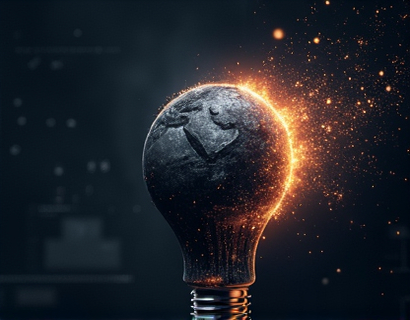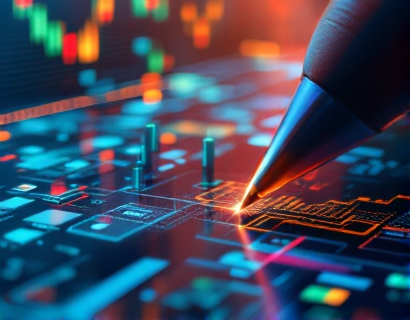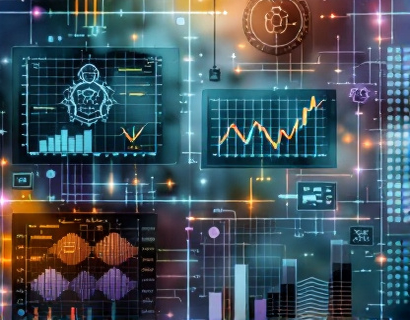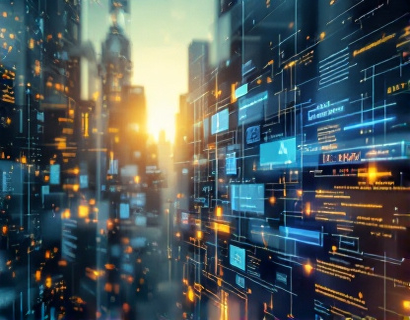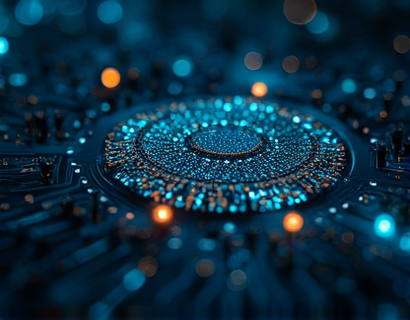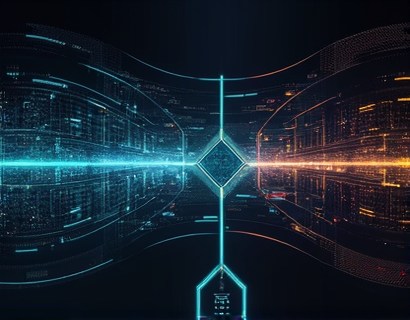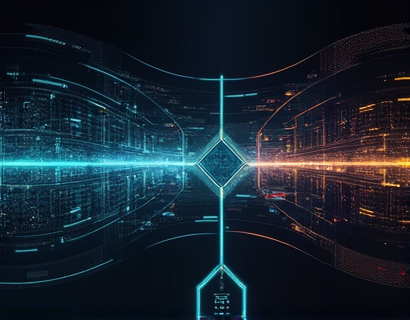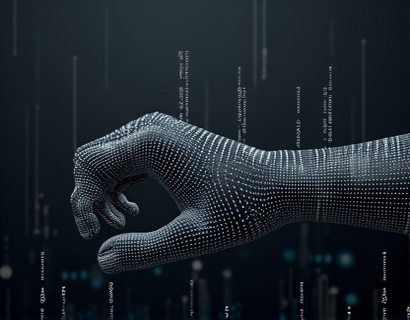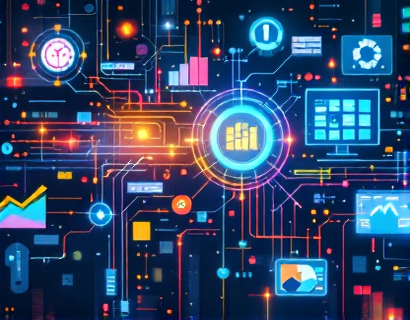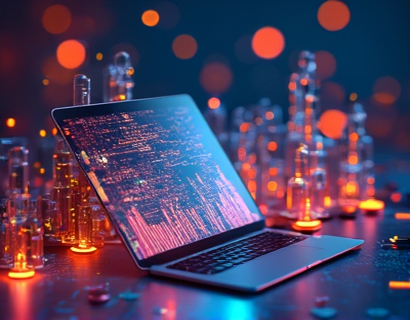Decentralized Transformation: Leveraging AI and Crypto for Enhanced Digital Experiences
The digital landscape is undergoing a profound transformation, driven by the convergence of artificial intelligence (AI) and blockchain technology. This convergence is not just a technological evolution but a paradigm shift that is redefining how we interact with digital services and applications. The integration of AI and blockchain is paving the way for enhanced user experiences, new business models, and unprecedented growth opportunities. This article delves into the future of digital transformation, exploring how these technologies are reshaping the tech landscape and offering insights for tech professionals and enthusiasts.
The foundation of this transformation lies in the unique capabilities of AI and blockchain. AI brings intelligence, automation, and personalization to digital experiences, enabling systems to learn from data, adapt to new inputs, and perform tasks that traditionally required human intervention. Blockchain, on the other hand, provides a decentralized, secure, and transparent framework for transactions and data management. When combined, these technologies create a powerful synergy that enhances trust, efficiency, and innovation.
Enhanced User Experiences through AI and Blockchain
One of the most significant impacts of AI and blockchain on digital experiences is the enhancement of user interactions. AI-driven personalization ensures that users receive tailored content and services based on their preferences and behavior. For instance, recommendation systems powered by machine learning algorithms can analyze user data to suggest products, articles, or services that align with individual interests. This level of personalization not only improves user satisfaction but also increases engagement and loyalty.
Blockchain technology complements AI by providing a secure and transparent layer for these interactions. Smart contracts, self-executing contracts with the terms directly written into code, can automate and enforce agreements without the need for intermediaries. This reduces friction and enhances trust, as all parties can verify the terms and execution of the contract in real-time. For example, in the context of digital content consumption, blockchain can ensure that creators are fairly compensated for their work, while AI can curate and deliver content that resonates with users.
Decentralized Applications and User Empowerment
Decentralized applications (dApps) are at the forefront of this transformation, offering users greater control and ownership over their data and digital assets. Unlike traditional applications that rely on centralized servers, dApps are built on blockchain networks, distributing control across a network of nodes. This decentralization not only enhances security but also empowers users by giving them direct access to the data and services they use.
AI plays a crucial role in the development and functionality of dApps. Machine learning algorithms can be integrated into dApps to provide intelligent features such as predictive analytics, natural language processing, and automated decision-making. For instance, a decentralized finance (DeFi) platform can use AI to offer personalized investment advice, risk assessment, and portfolio management, all while maintaining the decentralized and transparent nature of the blockchain.
Use Cases of AI and Blockchain in Various Industries
The potential of AI and blockchain is not limited to digital experiences; it extends across various industries, each with its unique use cases and benefits.
In the healthcare sector, AI and blockchain can revolutionize patient care and data management. AI algorithms can analyze medical data to predict disease outbreaks, personalize treatment plans, and assist in diagnosis. Blockchain ensures the secure and privacy-preserving sharing of medical records among healthcare providers, enhancing collaboration and patient outcomes. For example, a blockchain-based platform can store patient consent and access permissions, ensuring that only authorized parties can view and update medical records.
In the supply chain industry, the combination of AI and blockchain can enhance transparency and efficiency. AI can optimize logistics and inventory management by analyzing real-time data and predicting demand. Blockchain provides an immutable ledger for tracking products from origin to destination, reducing fraud and ensuring authenticity. This is particularly valuable in industries like pharmaceuticals and luxury goods, where traceability and authenticity are critical.
The financial sector is another area where AI and blockchain are driving significant changes. AI-powered trading algorithms can analyze vast amounts of market data to make informed investment decisions, while blockchain enables fast, secure, and cost-effective cross-border transactions. Smart contracts can automate complex financial processes, reducing the need for intermediaries and lowering transaction costs. Decentralized exchanges (DEXs) built on blockchain allow users to trade cryptocurrencies directly, without the need for centralized exchanges.
Challenges and Considerations
Despite the numerous benefits, the integration of AI and blockchain also presents challenges that need to be addressed. One of the primary concerns is scalability. Blockchain networks, especially those using proof-of-work consensus mechanisms, can struggle with high transaction volumes and slow processing times. AI systems, particularly those requiring extensive data processing and machine learning training, also demand significant computational resources.
Another challenge is the regulatory landscape. The decentralized nature of blockchain and the use of cryptocurrencies raise questions about jurisdiction, compliance, and legal frameworks. As governments and regulatory bodies begin to address these issues, businesses and developers must stay informed and adapt to changing regulations to ensure compliance and avoid legal risks.
Interoperability is another critical aspect. The current ecosystem of blockchain platforms and AI systems often operates in silos, limiting the seamless integration and interaction between different technologies. Developing standards and protocols for interoperability is essential to unlock the full potential of AI and blockchain combined.
Future Outlook and Opportunities
The future of digital transformation through AI and blockchain is promising, with numerous opportunities for innovation and growth. As technology continues to evolve, we can expect more sophisticated AI models that can better integrate with blockchain systems, leading to more intelligent and autonomous dApps. The rise of edge computing will further enhance the performance of AI applications by processing data closer to the source, reducing latency and improving efficiency.
The convergence of AI and blockchain also opens up new business models and revenue streams. For instance, tokenized economies within dApps can incentivize user participation and contribution, creating decentralized communities that drive value creation. AI-driven marketplaces can match suppliers and demanders more effectively, optimizing resource allocation and reducing waste.
For tech professionals and enthusiasts, this intersection of AI, blockchain, and decentralized applications presents a fertile ground for innovation and career growth. Staying updated with the latest developments, experimenting with new technologies, and collaborating with like-minded individuals will be key to thriving in this evolving tech landscape.
In conclusion, the integration of AI and blockchain is not just a technological trend but a fundamental shift in how we build and interact with digital systems. By leveraging these technologies, we can create more secure, efficient, and user-centric digital experiences that drive growth and innovation. As we move forward, embracing this transformation will be essential for businesses and individuals alike to stay competitive and relevant in the digital age.






